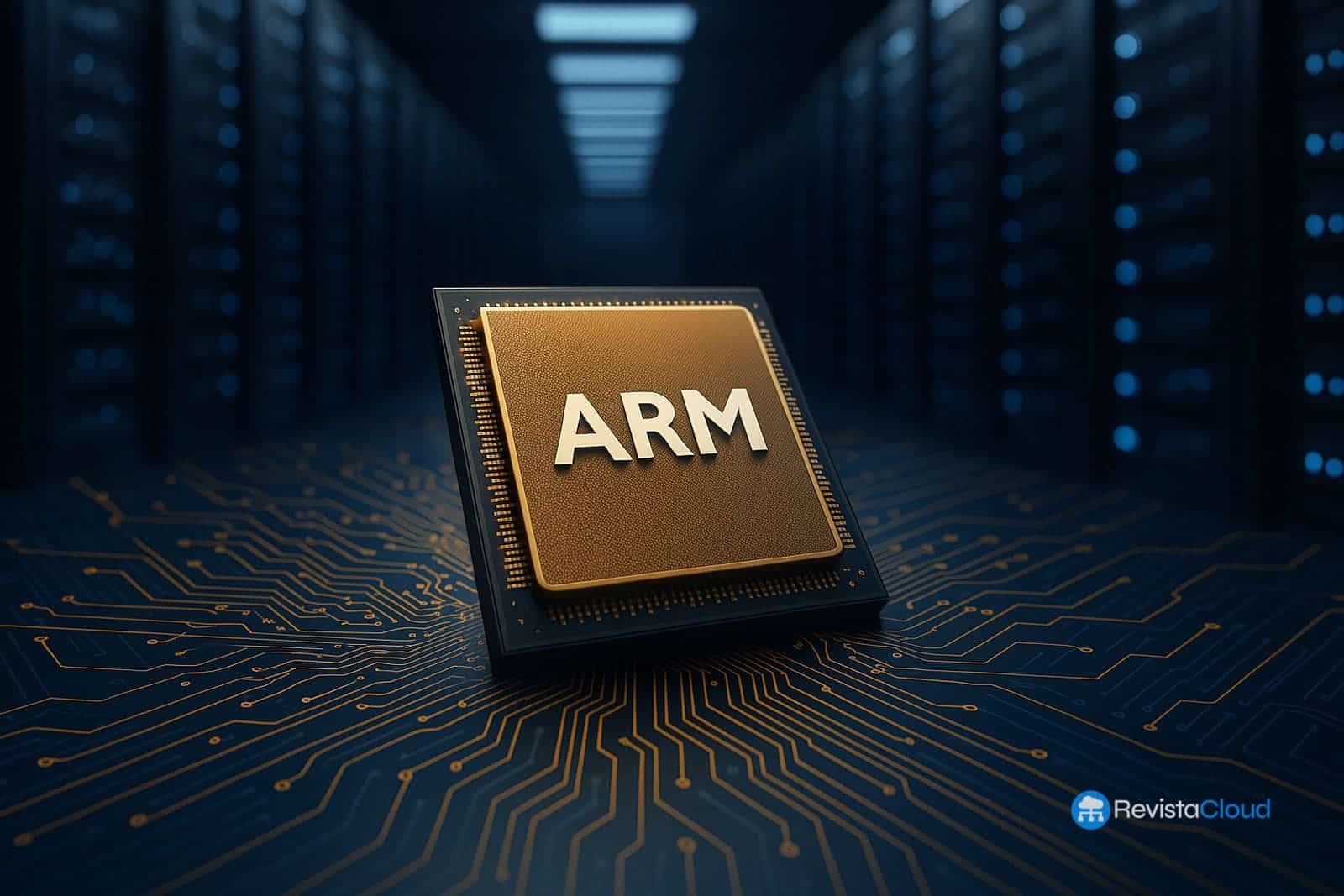The British firm celebrates four decades of innovation that transformed the tech landscape, from 80s microcomputers to the era of smartphones, the cloud, and artificial intelligence.
In 2025, ARM Holdings marks its 40th anniversary, a significant milestone in computer history. Founded in November 1983 as Acorn RISC Machine in a modest Cambridge lab, this small British company laid the groundwork for an architecture that today powers over 95% of the world’s smartphones, millions of IoT devices, emerging supercomputers, and even cloud servers.
Academic Origins and the Low-Power Revolution
ARM was born as a spin-off from Acorn Computers, known for developing the BBC Micro computer, with the goal of creating efficient processors for personal systems. Inspired by the principles of RISC (Reduced Instruction Set Computer) design, the early ARM chips prioritized simplicity and energy efficiency over the complexity of other architectures like x86.
In 1990, ARM restructured as Advanced RISC Machines Ltd., separating from Acorn and Apple—also an initial stakeholder—to become an independent company. Its business model was radically different: ARM does not manufacture chips but instead licenses its architecture and designs to manufacturers such as Qualcomm, Apple, Samsung, NVIDIA, and Broadcom.

The Mobile Era: The Big Leap
The popularity of the ARM architecture surged with the mobile phone revolution. In a market where energy consumption, heat, and size were critical factors, ARM CPUs offered a strategic advantage. With the arrival of the iPhone in 2007 and later Android, ARM established itself as the dominant architecture in mobility.
The modular design, scalability, and focus on efficiency allowed manufacturers to create custom SoCs (System-on-Chip), integrating CPUs, GPUs, memory controllers, and more, all under ARM licenses. Today, giants like Apple with its M1, M2, and M3 chips or NVIDIA with Grace rely on ARM designs or licenses for its ARMv9 architecture, launched in 2021 with enhancements in security and vector performance.
ARM at the Center of the Cloud and Artificial Intelligence
Although historically relegated to low-power environments, ARM has expanded its presence in data centers and supercomputing. Amazon Web Services, for example, has developed its own line of Graviton processors based on ARM to power cloud services with better energy efficiency than traditional x86 chips.
The Fugaku system, one of the world’s most powerful supercomputers until recently, uses ARM CPUs developed by Fujitsu. Companies like Ampere Computing and Alibaba are also driving new ARM servers specifically designed for cloud workloads, big data, and AI applications.
Additionally, ARM’s flexibility has facilitated its integration into specialized AI chips, including NPUs (Neural Processing Units) and adaptive accelerators in embedded systems, autonomous vehicles, and edge computing devices.
Going Public and Strategic Challenges
In September 2023, ARM returned to the public market with a successful IPO on Nasdaq, valued at over $65 billion, after being acquired in 2016 by the Japanese conglomerate SoftBank for $32 billion. This move aimed to revalue the company and reinforce its technological independence amid rising geopolitical tensions surrounding semiconductors.
Despite its dominance in key sectors, ARM faces challenges. The open-source RISC-V architecture is beginning to gain ground in embedded systems and IoT devices, offering a royalty-free alternative. Additionally, the return of Apple and other companies to custom ARM chip design is reducing direct dependency on the company for complete architecture licenses.
A Legacy of Efficiency and Scalability
Over four decades, ARM has redefined what it means to be “efficient” in the hardware world. From a 3-micron processor with 25,000 transistors in 1985 (ARM1) to cutting-edge designs with billions of transistors fabricated on 3-nanometer nodes, the company has maintained its original focus: more with less.
Today, ARM’s impact extends beyond phones or smartwatches. Its footprint includes electric vehicles, cameras, televisions, routers, appliances, AI chips, and cloud services, establishing itself as the invisible core of modern computing.
An Even More Ambitious Future
With its continuously evolving architecture and a community of over 1,000 business partners worldwide, ARM is preparing for the next decades with a focus on advanced security (confidential computing), vector processing for AI, and greater integration into critical infrastructures.
The coming years will be crucial in defining whether ARM can maintain its leadership against emerging architectures and how its ecosystem adapts to the explosive demand for computing in all its forms. But one thing this company born in Cambridge has proven is that efficiency, adaptability, and collaboration can build a silent… yet unstoppable technological empire.
References: ARM History and 40 Years of ARM

